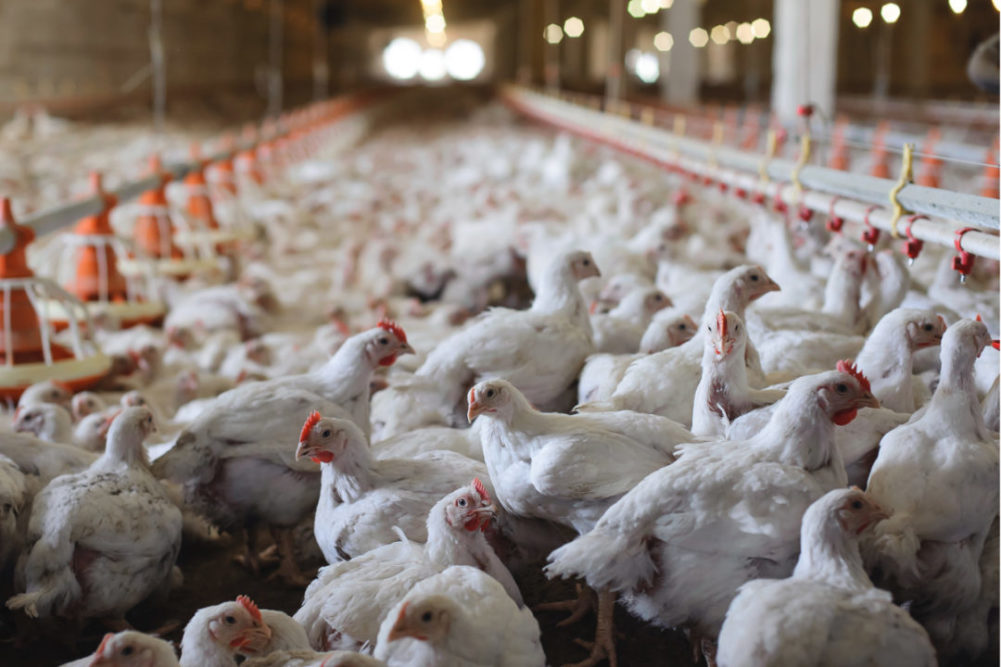UTRECHT, NETHERLANDS – The global poultry industry will start to recover as countries lift pandemic-related restrictions on foodservice operations, but major challenges lie ahead in the form of COVID-19-related market disruptions, very high and volatile prices for feed, avian influenza (AI) outbreaks in the Northern Hemisphere, and a bumpy recovery in countries affected by African swine fever (ASF), according to “Poultry Quarterly Q2 2021” by Rabobank.
“Key for producers in 1H 2021 will be to have a very disciplined supply growth, a focus on cost reduction via procurement, production efficiency, and feed formulation, as well as being prepared for big swings in demand driven by Covid-19-related government decisions,” said Nan-Dirk Mulder, senior analyst – Animal Protein at Rabobank.
Rabobank expects global poultry markets to gradually recover as governments work to control COVID-19 infections through lockdowns and vaccinations. Data from the Atlanta-based Centers for Disease Control and Prevention (CDC) show that, to date, 28.9% of the total US population, or more than 96 million people, have received at least one dose of a COVID-19 vaccination, while more than 53 million, or 16.1% of the total population, are fully vaccinated. However, COVID-19 infections are rising in some states and state and local governments are easing restrictions on building occupancy levels and mask mandates.
Despite the tough conditions, poultry markets showed significant improvement in the United States, Mexico, Russia, and Japan. Global traders will see gradual benefits as foodservice operations open and levels of poultry stocks fall. The European Union, South Africa, and Thailand face an oversupply of poultry, according to Rabobank.
Feed prices also present a headwind for the industry. Global grain and oilseed prices increased further in the first quarter of fiscal 2021, Rabobank said, driven by La Niña-upended weather in key producing countries and unprecedented import demand generated from China. Rising prices for feed present a huge challenge for poultry processors like Laurel, Miss.-based Sanderson Farms Inc. The average feed cost per pound of poultry products processed by the company was higher by 1.3% in the first quarter of 2021 compared with the first quarter of fiscal 2020. Prices paid during the first quarter of fiscal 2021 for corn and soybean meal, the Company’s primary feed ingredients, increased 8.9 percent and 27.5 percent, respectively, compared with the first quarter of fiscal 2020.
“Both corn and soybean balance tables reflect very tight supplies heading into the 2021 planting season,” Joe F. Sanderson, Jr., chairman and chief executive officer, said in the company’s first-quarter earnings announcement on Feb. 26. “Since May 2020, the USDA has lowered its estimate of ending corn stocks for the current crop year by 1.8 billion bushels, and its current estimate stands at 1.5 billion bushels, compared to a 10-year average of 1.6 billion bushels. The USDA’s February estimate of ending soybean stocks also moved lower to a seven-year low of 120 million bushels. Market prices for both grains have moved significantly higher since August.
“Had we priced all of our grain needs for fiscal 2021 at yesterday’s Chicago Board of Trade futures contract prices, cash paid for feed grains during fiscal 2021 on fiscal 2020 volumes would be $325.4 million higher than during fiscal 2020,” Sanderson noted.
Rabobank expects ongoing high prices during 2021, but slightly down from the current Q1 2021 level.
Avian influenza and African swine fever continue to play a hand in the global poultry market, according to Rabobank. The impact of ASF on pork production continues to influence poultry production regionally and globally, according to Rabobank.
China and Vietnam are most affected by ASF in Asia. On March 8, 2021, China’s Ministry of Agriculture and Rural Affairs (MARA) notified the US Embassy in Beijing that on March 2, ASF was detected in live hogs transported into Yunnan Province, the Foreign Agricultural Service (FAS) of the US Department of Agriculture reported. There were 36 susceptible animals, of which six were sick and six died. The remaining animals were culled and disposed. The animals were allegedly illegally transported into Yunnan.
China reported the outbreak to the World Organization for Animal Health (OIE) and is continuing to monitor the situation, FAS said.
Both Vietnam and China are both in recovery mode from ASF outbreaks, with China expected to increase pork production by 8% to 10% in 2021 and Vietnam by 8% to 12%, according to Rabobank.
“China’s lower-than-expected pork production in Q1 2021 and low chicken production levels supported a chicken price recovery in Q1, but we think that the ongoing expansion of pork, together with further growth of chicken production, will deflate prices later this year. This will also impact import volumes in China,” Mulder said.
And avian influenza outbreaks in the Northern Hemisphere have weighed on supplies of poultry in some countries, including Japan, South Korea, Russia, the European Union and the United Kingdom.
The disease also has pushed producers in the European Union to place fewer birds although this has led to some upside pressure on prices, Rabobank said.


